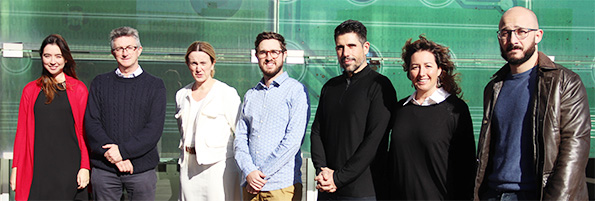
The Universitat Politècnica de València (UPV) integrates wireless devices, big data and predictive analysis in the cloud (cloud computing) for the preventive conservation of art collections. International research groups have presented at the European Collection Care project congress, led by the ITACA institute, the latest technological advances in the study of the behavior and degradation of cultural property, environmental control and the design of preventive preservation strategies of the collections.
The CollectionCare initiative, funded by the Horizon 2020 program with a budget of six million euros for three years, is coordinated by the research team led by Professor Ángel Perles, a member of the Institute of Information and Communication Technologies (ITACA).
The main objective of this consortium made up of 18 institutions is “to develop a system for the preventive conservation of cultural objects during their exhibition, storage, handling and transport using low-cost wireless devices –with the adaptation of LPWAN technologies– for the monitoring of the environmental parameters that influence the conservation of artworks ”, indicates researcher Ángel Perles, belonging to the Department of Systems and Computers Informatics (DISCA).
Real-time data for long-term recommendations
UPV professor Laura Fuster explains that the devices being designed have sensors to monitor temperature, relative humidity, light, ultraviolet radiation and atmospheric pollutants (NOx and VOCs). These devices, she says, “upload the data in real time to the cloud, where a structure has been designed for its storage and processing, using degradation modeling algorithms and preventive conservation standards in order to predict material damage and offer conservation recommendations for its long-term preservation ”.
The innovation provided by this preventive conservation system is precisely «the integration of these three areas: new technologies for the development of monitoring devices, cloud computing and big data and the development of degradation models», underlines Laura Fuster, member from the Department of Conservation and Restoration of Cultural Assets of the Faculty of Fine Arts, as well as a researcher at the Institute of Heritage Restoration (IRP) of UPV.
Connectivity, sensors and cloud computing
More than 275 representatives from 170 research centers, collections and companies from 40 countries gathered at the virtual conference CollectionCare: New Challenges in Preventive Conservation, Predictive Analysis and Environment Monitoring. This meeting, the closing of the European project, has allowed the exchange of highly specialized research in which more than a hundred researchers from the field of heritage, telecommunications, and applied sciences participate.
Three main axes structured the program, with more than 60 communications: the needs and challenges of the collections, predictive analysis in the conservation of cultural heritage and connectivity technologies, sensors and cloud computing.
At this International Collection Care forum, the most relevant researchers currently involved in the core subjects of this project took part, coming from world-renowned institutions such as The Royal Danish Academy of Fine Arts Schools of Architecture, Design And Conservation (Copenhagen, Denmark), the Technische Universiteit Eindhoven (Netherlands), the Polish Academy of Science or the Fraunhofer-Institut, among others.
In addition, it was attended by specialists from institutions dedicated to the safeguarding of cultural heritage such as the Smithsonian Institution (USA), the Getty Conservation Institute (USA), ICCROM (Italy) and the Canadian Conservation Institute (Canada).
The CollectionCare project has received funding from the H2020 Research and Innovation Program of the European Union through grant agreement No. 814624.
Source: UPV’s Information Office



